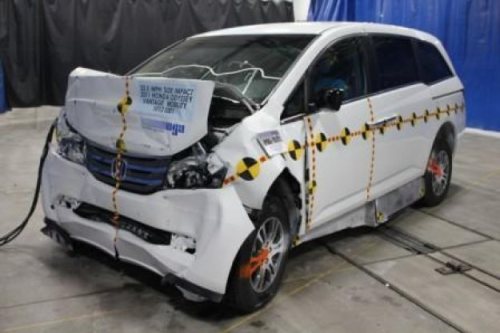
Mobility beyond the wheelchair is out there, but so often, it’s out of reach financially for individuals with disabilities who have spent thousands on medical care. There are several avenues that lead to funds for a wheelchair accessible vehicle or adaptive equipment for driving, like loans, government assistance, mobility rebates and grants. So what’s great about grants?
Grant money doesn’t need to be repaid, which makes it especially attractive. What’s more, grant opportunities are plentiful; relevant grant-making organizations and foundations will supply partial or complete funding on wheelchair accessible vans for sale or assistive equipment; and you can combine funds from several sources to purchase the freedom and independence an accessible vehicle provides. Obtaining a grant to fund an accessible vehicle requires patience, perseverance and a detailed application process. Though it sounds daunting, these tips will help you navigate the process:
- Be Patient
Grant providers don’t work in your time frame. They process thousands of applications just like yours, so you may wait longer than you’d like for a response. Expressing your aggravation to the grant provider might be counterproductive. Lowering your expectations will also lower your level of frustration during your quest for grant money. If you’re prepared for progress to move slowly, you’ll be thrilled if it takes less time than you expect.
- Be Prepared with Necessary Information
With the likelihood you’ll want to apply to several granting institutions, it simply makes sense to have your basic information gathered and quickly accessible, so you can begin filling out an application as soon as you’ve identified another potential grant opportunity. Though the requirements on grant applications vary, you’ll need personal information on all of them, such as your Social Security Number, driver’s license number (if you have one), marital status, financial information and personal background details. It’s all about expediting the application process on your end. Keep in mind that funding organizations have different policies and requirements, so you’ll need to be flexible.
- Line up Medical Records and References
Granting institutions will want to see your medical records. Your physician can provide you with a copy. Some physicians prefer to send your records directly to the granting institution. Either way, be sure your physician understands why you need your medical records. While you’re at it, ask your physician to write a letter of recommendation. It’s not necessary, but a letter from your physician, written on letterhead stationery, can often be helpful when applying for a grant. Ask that the letter be addressed to a generic individual (“Dear Sir or Madam” or “To Whom It May Concern”), so you can include a copy with each application.
Now’s the time to get references to support your efforts – ask close friends, neighbors, colleagues, church members and anyone who you believe will provide convincing, compelling input about your character and disability. Funding organizations want their personal perspective about your accomplishments, your attitude and how you manage your disability on a daily basis. Your references can also comment on how grant money to buy a wheelchair accessible vehicle would improve your present lifestyle.
- Make Your Case
Your mission is to help the funding organization understand your personal history, your challenges and the impact any hardships have had on your life. Be honest and persuasive in telling your story to the grant provider (including an articulate, straightforward narrative, 1-2 pages in length), describing your plans for the funding and its potential positive effect on your future. Focus on setting yourself apart from other applicants with an emotional, inspiring account. You’re in competition for a limited amount of money, so this is important.
- Research and Identify Appropriate Granting Institutions
You now have the necessary documents and backing to begin applying for grants. Start your research with these handicap van grants, sorted by location, medical need, veterans, special needs children and others to find one or more grants for your specific situation. If you search the Internet, use “disability grant providers,” “disability grants” and other relevant keyword phrases to find foundations and organizations. If you’re a disabled veteran, check with the Veterans Administration. Remember, you can combine sources to amass as much money as possible for your wheelchair van or adaptive equipment.
Organizations that support specific conditions often provide grants to people living with that disorder. Examples include United Cerebral Palsy, the National Multiple Sclerosis Society and the Muscular Dystrophy Association (MDA).
When you’ve identified a potential granting organization, read their mission statement and get an application form. Craft a cover letter in which you align your needs with the organization’s goals to demonstrate how you can help achieve the provider’s objectives. This is essential information for the funding organization.
- Contact the Grant Providers
If at all possible, speak or write to the person in charge when you begin the application process to fund your handicap van. Typically, assistance programs will assign a project officer or contact person to help you through the details. Always be polite and thank them for their time. Through this direct line of communication, you can have your questions and concerns addressed. Get a contact name, phone number and email address for every organization to obtain status updates on your application. Request information on their timeline for choosing a candidate for the funding opportunity.
- Stay Organized and Aware
With multiple applications at different stages in the process, it’s essential to keep track of your documents and deadlines. You should be able to put your hands on documents and paperwork at any given moment. Devise a system to remind yourself of important dates and deadlines, and be sure everything is submitted on time. Stand out from other applicants by demonstrating your desire to earn their financial assistance – meet all deadlines and stay up-to-date on the status of your applications.
Keep copies of all of your applications (electronic or paper copies, or both), and save any confirmation numbers or application numbers you may receive in a safe, readily accessible place. You may be asked for them at some point.
It may take time and effort to get the funding you need for a wheelchair van or adaptive equipment, but it’s absolutely worth it to gain the freedom and independence that can change your life.


 Once the rust is this bad there’s not much we can do other than replace the van.
Once the rust is this bad there’s not much we can do other than replace the van.

